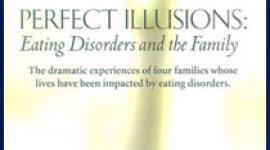The Five Greatest Motivators For Preschool Children to Eat Healthy Foods
Let's get practical. The five greatest motivators for preschool children to eat healthy foods are:
1) Imitation. If the foods in the house are healthy, kids will pick their favorites from among healthy choices.
2) Tasty choices. Often kids' fruit alternatives are restricted to apples and bananas, and maybe grapes or oranges. Many kids love peaches, tangerines, cherries, blueberries, raspberries, blackberries, strawberries, plums, pears, watermelon, and pineapple. Try Spoon-Sized Shredded Wheat, corn bran, or oatmeal with fresh berries. Try bran crispbread as a snack instead of crackers or toast made from white flour. Whole-grain pancakes can be a hit. The younger you start, the quicker they will develop their tastes in these directions. During the preschool years, make butter a treat for vegetables. Butter on green beans makes them a lot tastier. Because of the "crunch," many kids like raw carrot sticks all by themselves.
3) Fun presentation. When feeding your kids, you are competing against multimillion-dollar advertising campaigns. Children's TV has many commercials for sweetened breakfast cereals ("part of this nutritious breakfast"--which would be far more nutritious without the sweetened breakfast cereal!). Where are the commercials for fresh veggies? They'll have to come from us. Preschool children often love food that is shaped like something interesting--a face, a clown, a dinosaur, a favorite hero, etc. Processed macaroni is manufactured this way because it sells. In this environment we need to make healthy food as appealing as the empty or harmful alternatives. Try a whole-grain pancake with a strawberry for a nose, kiwi slices for eyes, and banana for the mouth. Brush its teeth with the fork before eating (since after eating it won't have any teeth left!). Try corn on the cob served standing up (it's a rocket ship), or lying down with a toothpick stuck in the side (it's a submarine--the toothpick is the periscope).
4) When all else fails, sneak it in. Make zucchini bread, carrot muffins. Add shaved vegetables or pieces of fruit to virtually any baked good. Dried cranberries can be a hit (while dried fruit is high in sugar, it is also high in fiber). A great way to hide fruit and vegetables is in whole-food smoothies and juices. High-speed blenders, such as the models manufactured by Vita-Mix (not juice extractors that take the pulp and fiber--and many nutrients--out) can turn fresh oranges, carrots, and yogurt into a delicious treat.
5) Give a daily multivitamin as a safety net in this processed-food world. Vitamins are, by definition, compounds necessary in trace amounts for the normal functioning of the human body.
We need vitamins in order to see the world around us, to grow, to make bones and connective tissue, to fight infections and cancer, to heal wounds, to stop from bleeding to death, and to keep our teeth from falling out.
 We are not self-sufficient. We depend on a steady supply from outside sources for these vital compounds. Vitamins cannot be manufactured in sufficient amounts by the body and must be taken in from the environment. They occur naturally in many foods (vitamin D is manufactured by the body in response to sunlight exposure--15 minutes a week is all that is needed). Vitamins are also available as commercial nutritional supplements.
We are not self-sufficient. We depend on a steady supply from outside sources for these vital compounds. Vitamins cannot be manufactured in sufficient amounts by the body and must be taken in from the environment. They occur naturally in many foods (vitamin D is manufactured by the body in response to sunlight exposure--15 minutes a week is all that is needed). Vitamins are also available as commercial nutritional supplements.
While I have great respect for the results of modern nutritional analysis, I have greater respect for the longstanding relationship between humans and their natural foods. By eating whole foods (fresh vegetables, fresh fruit, whole grains, etc.), your child can get the necessary vitamins in the healthiest way. Vitamins occur in foods in forms that are the easiest for the body to use and are accompanied by important related compounds.
Toddlers and preschoolers are often picky eaters. As children grow, their tastes change, and over time they should begin to eat a more well-rounded diet. A vitamin "safety net" takes the pressure off feeding issues during the early years. Without pressure or worry, you can be free to be creative about increasing whole foods in your child's diet, knowing that vitamins are present to help your child grow strong and healthy.
This isn't to suggest that the battle is an easy one. Recently on Dateline NBC (an American television show), host Jane Pauley casually mentioned not liking vegetables as a child. While this phenomenon is as current as today's news, it is also as perennial as our oldest nutritional records. I've heard it said that the ancient Greeks defined children as short humans who don't like vegetables. :^) Now that we have mass advertising, children's fun meals, and peer pressure, the battle is all the harder. But the battle is worthwhile, and it can certainly be fun. The battle should never be with your kids. Never push. Entice them, persuade them, teach them. Battle bad nutrition.
next: Tips for Kids on Eating Well and Feeling Good about Yourself
~ eating disorders library
~ all articles on eating disorders
APA Reference
Tracy, N.
(2008, December 31). The Five Greatest Motivators For Preschool Children to Eat Healthy Foods, HealthyPlace. Retrieved
on 2026, January 6 from https://www.healthyplace.com/eating-disorders/articles/the-five-greatest-motivators-for-preschool-children-to-eat-healthy-foods



